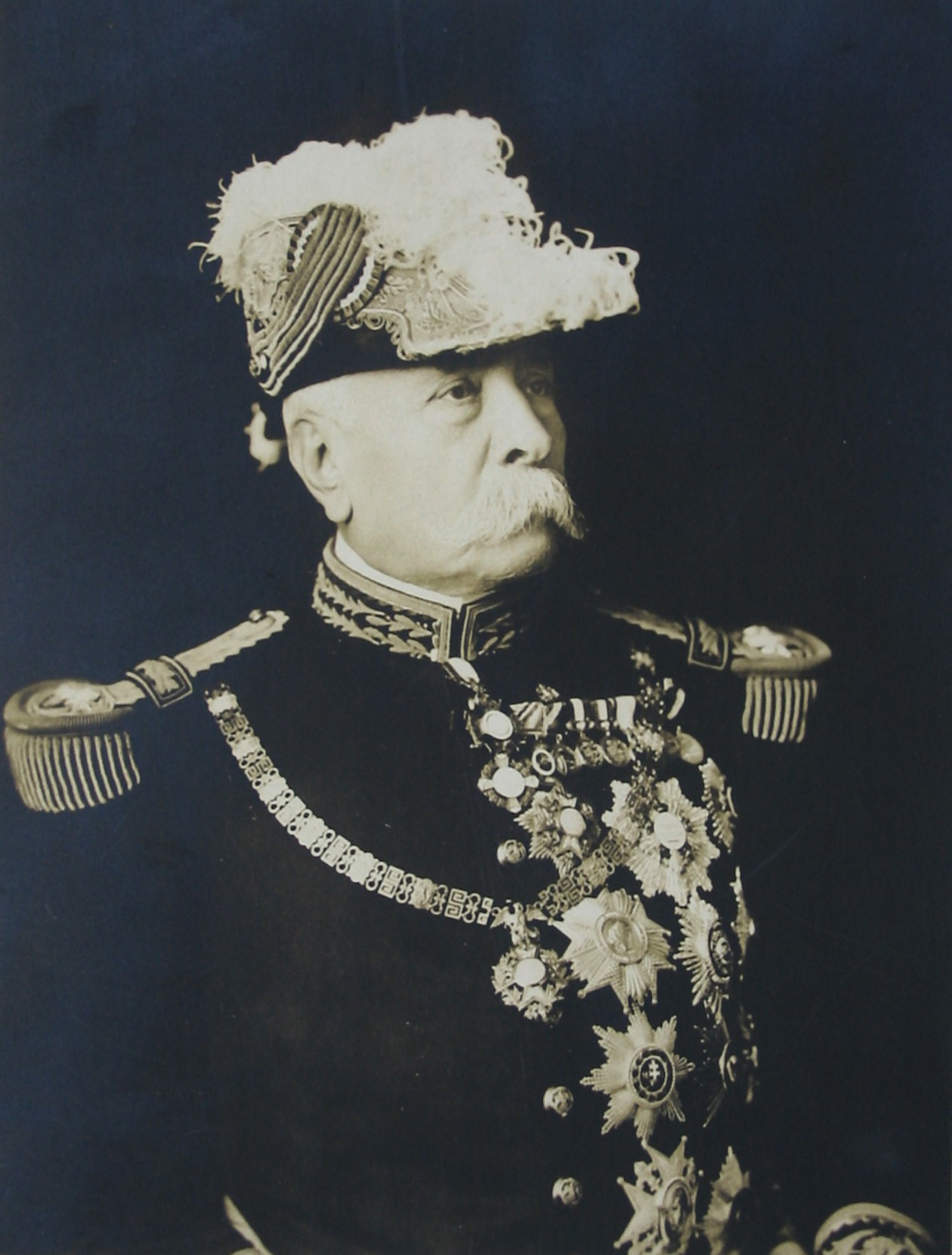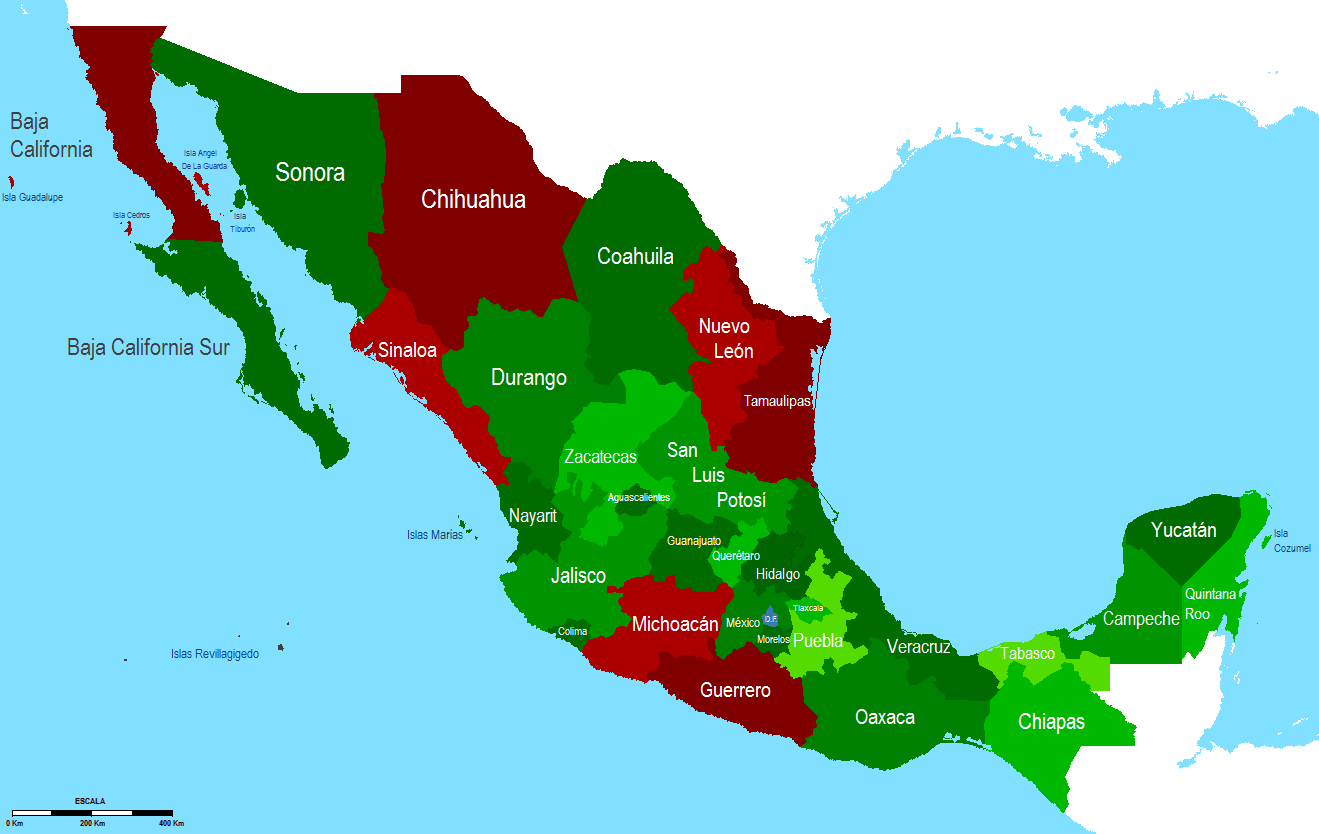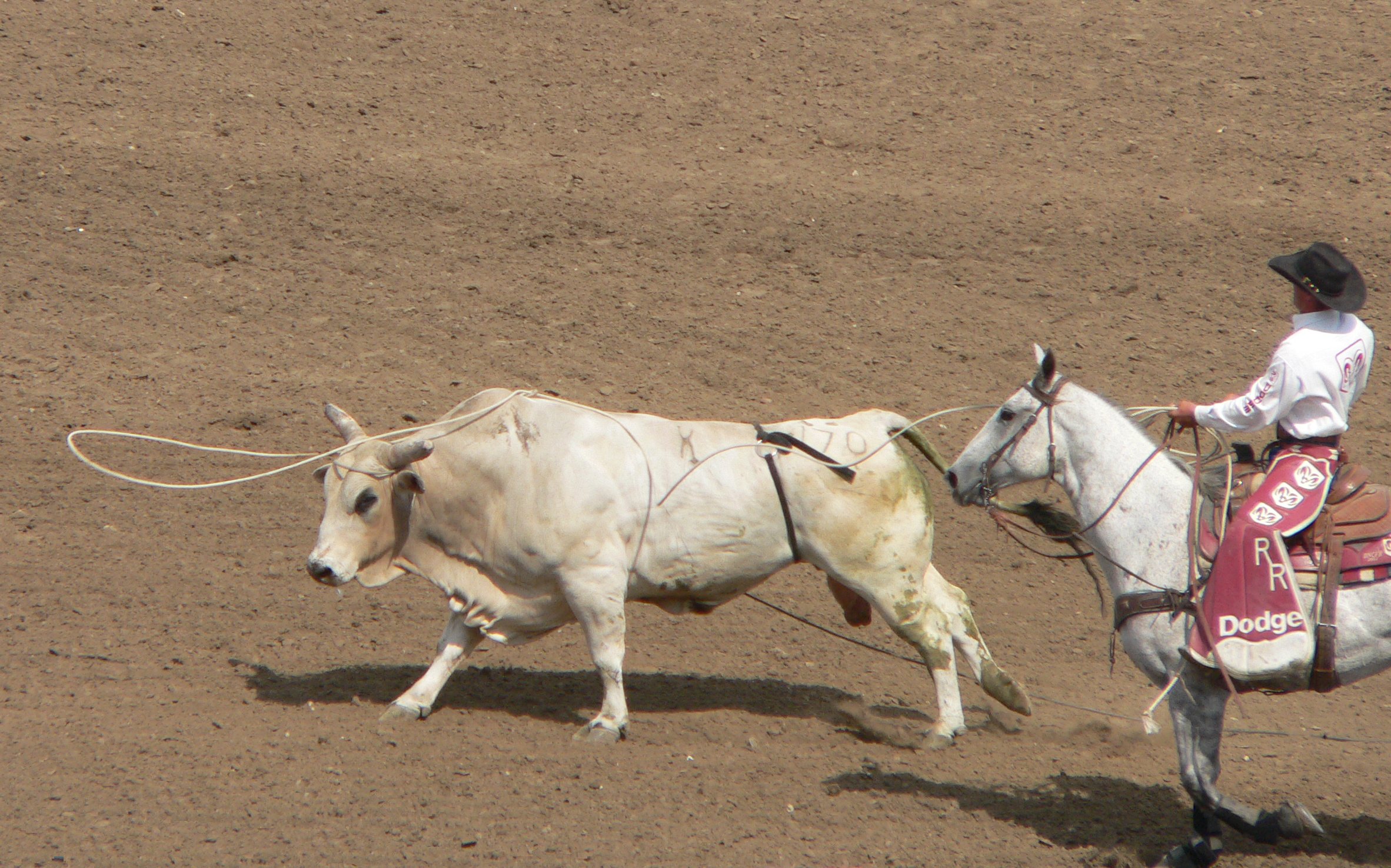|
Rurales
In Mexico, the term ''Rurales'' ( Spanish) is used to refer to two armed government forces. The historic Guardia Rural ('Rural Guard') was a rural mounted police force, founded by President Benito Juárez in 1861 and expanded by President Porfirio Díaz (r. 1876–1911). Under Díaz, it served as an effective force of repression and a counterweight to the Mexican Army during the nineteenth and early twentieth centuries. The ''rurales'' were dissolved during the Mexican Revolution. The modern Cuerpo de Defensa Rural ('Rural Defense Corps') is a modern part-time voluntary militia, generally used to support Federal forces. Rural Guard 1861–1914 The ''Guardia Rural'' was established as a federal constabulary by the Liberal regime of Benito Juárez in 1861. This mounted rural police force became best known during the long rule of President Porfirio Díaz (1876–1911). Origins As originally constituted under President Juárez the ''Rurales'' lacked the numbers and or ... [...More Info...] [...Related Items...] OR: [Wikipedia] [Google] [Baidu] |
Mexican Revolution
The Mexican Revolution () was an extended sequence of armed regional conflicts in Mexico from 20 November 1910 to 1 December 1920. It has been called "the defining event of modern Mexican history". It saw the destruction of the Federal Army, its replacement by a Liberation Army of the South, revolutionary army, and the transformation of Mexican culture and Federal government of Mexico, government. The northern Constitutionalists in the Mexican Revolution, Constitutionalist faction prevailed on the battlefield and drafted the present-day Constitution of Mexico, which aimed to create a strong central government. Revolutionary generals held power from 1920 to 1940. The revolutionary conflict was primarily a civil war, but foreign powers, having important economic and strategic interests in Mexico, figured in the outcome of Mexico's power struggles; United States involvement in the Mexican Revolution, the U.S. involvement was particularly high. The conflict led to the deaths of around ... [...More Info...] [...Related Items...] OR: [Wikipedia] [Google] [Baidu] |
Mexican Drug War
The Mexican drug war is an List of ongoing armed conflicts, ongoing Asymmetric warfare, asymmetric armed conflict between the Federal government of Mexico, Mexican government and various Drug cartel#Mexico, drug trafficking syndicates. When the Mexican military intervened in 2006, the government's main objective was to reduce drug-related violence. The Mexican government has asserted that its primary focus is dismantling the cartels and preventing Illegal drug trade in Latin America, drug trafficking. The conflict has been described as the Mexican Theater (warfare), theater of the global war on drugs, as led by the United States federal government. Violence escalated after the arrest of Miguel Ángel Félix Gallardo in 1989. He was the leader and the co-founder of the first major Mexican drug cartel, the Guadalajara Cartel, an alliance of the current existing cartels (which included the Sinaloa Cartel, the Juarez Cartel, the Tijuana Cartel, and the Sonora Cartel with Aldair Maria ... [...More Info...] [...Related Items...] OR: [Wikipedia] [Google] [Baidu] |
Cuerpo De Defensa Rural
The Rurales are a Mexican part-time militia called the ''Cuerpo de Defensa Rural'' (Rural Defense Corps). Origins Cuerpo de Defensa Rural was originally formed as village self-defence groups during the agrarian disturbances of the 1920s. They do not have any functions that parallel those of the paramilitary mounted police force of the 1861–1914 era. This corps was formed under army jurisdiction according to the Organic Law of 1926. Its origins, however, date back to the period when the revolutionary agrarian reform program was first implemented in 1915. In efforts to protect themselves against the private armies of recalcitrant, large landowners, rural peasants organized themselves into small defence units and were provided with weapons by the revolutionary government. Until 1955 enlistment in the Rural Defence Force was restricted to peasants working on collective farms (ejidos). After 1955 participation in the Rural Defence Force was expanded to include small farmers and l ... [...More Info...] [...Related Items...] OR: [Wikipedia] [Google] [Baidu] |
Mexican Army
The Mexican Army () is the combined Army, land and Air Force, air branch and is the largest part of the Mexican Armed Forces; it is also known as the National Defense Army. The Army is under the authority of the Secretariat of National Defense or SEDENA and is headed by the Secretary of National Defence. It was the first army to adopt (1908) and use (1910) a self-loading rifle, the Mondragón rifle. The Mexican Army has an active duty force of 261,773 men and women in 2024. History Antecedents Pre-Columbian era: native warriors In the prehispanic era, there were many indigenous tribes and highly developed city-states in what is now known as central Mexico. The most advanced and powerful kingdoms were those of Tenochtitlan, Texcoco (altepetl), Texcoco and Tlacopan, which comprised populations of the same ethnic origin and were politically linked by an alliance known as the Aztec Triple Alliance, Triple Alliance; colloquially these three states are known as the Aztec. Th ... [...More Info...] [...Related Items...] OR: [Wikipedia] [Google] [Baidu] |
Cananea Strike
The Cananea strike, also known as the Cananea riot, or the Cananea massacre, took place June 1st 1906 in the mining town of Cananea in Sonora Mexico. The strike was instigated due to poor working conditions and unequal pay between Mexican and American workers. Despite attempting change through a organized labor strike the workers were ultimately forced to return to work without their demands being met. The strike resulted in the deaths of approximately 33 workers, an additional 22 who were injured, and 50 more who were arrested. The strike proved to be emblematic of the growing unrest emerging under President Porfirio Diaz prior to the outbreak of the Mexican Revolution. History of the Cananea Copper Company The Cananea Copper Company was founded by American entrepreneur William Cornell Greene in 1896. Under the Diaz administration Mexican resources were often sold to foreign companies which enabled Green to establish the mine. In addition, Green was able to expand his influ ... [...More Info...] [...Related Items...] OR: [Wikipedia] [Google] [Baidu] |
Mexican Military
The Mexican Armed Forces () are the military forces of the United Mexican States. The Spanish crown established a standing military in colonial Mexico in the eighteenth century. After Mexican independence in 1821, the military played an important political role, with army generals serving as heads of state. Following the collapse of the Federal Army during the 1910–1920 Mexican Revolution, former revolutionary generals systematically downsized the size and power of the military. The Mexican military forces are composed of two independent entities: the Mexican Army and the Mexican Navy. The Mexican Army includes the Mexican Air Force, while the Mexican Navy includes the Naval Infantry Force (Marine Corps) and the Naval Aviation (''FAN''). The Army and Navy are controlled by two separate government departments, the National Defense Secretariat and the Naval Secretariat, and maintain two independent chains of command, with no joint command except the President of Mexico. His ... [...More Info...] [...Related Items...] OR: [Wikipedia] [Google] [Baidu] |
Valley Of Mexico
The Valley of Mexico (; ), sometimes also called Basin of Mexico, is a highlands plateau in central Mexico. Surrounded by mountains and volcanoes, the Valley of Mexico was a centre for several pre-Columbian civilizations including Teotihuacan, the Toltec, and the Aztec Empire. The valley used to contain five interconnected lakes called Lake Zumpango, Lake Xaltocan (), Lake Xochimilco, Lake Chalco and the largest, Lake Texcoco, covering about of the valley floor. When the Spaniards arrived in the Valley of Mexico, it had one of the highest population concentrations in the world with about one million people. After the conquest of the Aztec Empire, the Spaniards rebuilt the largest and most dominant city, Mēxihco Tenōchtitlan, renaming it ''Ciudad de México'' (Mexico City) and over time began to drain the lakes' waters to control flooding. The Valley of Mexico is located in the Trans-Mexican Volcanic Belt. The valley contains most of the Mexico City metropolitan area, ... [...More Info...] [...Related Items...] OR: [Wikipedia] [Google] [Baidu] |
Carbine
A carbine ( or ) is a long gun that has a barrel shortened from its original length. Most modern carbines are rifles that are compact versions of a longer rifle or are rifles chambered for less powerful cartridges. The smaller size and lighter weight of carbines make them easier to handle. They are typically issued to high-mobility troops such as special operations soldiers and paratroopers, as well as to mounted, artillery, logistics, or other non-infantry personnel whose roles do not require full-sized rifles, although there is a growing tendency for carbines to be issued to front-line soldiers to offset the increasing weight of other issued equipment. An example of this is the M4 carbine, the standard issue carbine of the United States Armed Forces. Etymology The name comes from its first users — cavalry troopers called " carabiniers", from the French ''carabine'', from Old French ''carabin'' (soldier armed with a musket), whose origin is unclear. One theory connects ... [...More Info...] [...Related Items...] OR: [Wikipedia] [Google] [Baidu] |
President Of Mexico
The president of Mexico (), officially the president of the United Mexican States (), is the head of state and head of government of Mexico. Under the Constitution of Mexico, the president heads the executive branch of the federal government and is the commander in chief of the Mexican Armed Forces. The office, which was first established by the 1824 Constitution of Mexico, federal Constitution of 1824, is currently held by Claudia Sheinbaum, who was sworn in on October 1, 2024. The office of the president is considered to be revolutionary, in the sense that the powers of office are derived from the Mexican Revolution, Revolutionary Constitution of Mexico, Constitution of 1917. Another legacy of the Mexican Revolution is the Constitution's ban on re-election. Mexican presidents are limited to a single six-year term, called a ''sexenio (Mexico), sexenio.'' No one who has held the post, even on a caretaker basis, is allowed to run or serve again. The constitution and the office of t ... [...More Info...] [...Related Items...] OR: [Wikipedia] [Google] [Baidu] |
Lasso
A lasso or lazo ( or ), also called reata or la reata in Mexico, and in the United States riata or lariat (from Mexican Spanish lasso for roping cattle), is a loop of rope designed as a restraint to be thrown around a target and tightened when pulled. It is a well-known tool of the Mexican and South American cowboys, which was then adopted from the Mexicans by the cowboys of the United States. The word is also a verb; ''to lasso'' is to throw the loop of rope around something. Etymology The word ''lasso'' seems to have begun to be used as an English word in the early nineteenth century. It may have originated from the Castilian Spanish, Castilian word ''lazo'', which is first attested in the thirteenth century in the sense 'noose, snare', and derives in turn from classical Latin language, Latin ''laqueus'' ('noose, snare, trap, bond, tie'). The rope or lasso used to restrain cattle is also called ''Reata'' or ''La Reata'' in Mexico, which was Anglicized to “Lariat” or “R ... [...More Info...] [...Related Items...] OR: [Wikipedia] [Google] [Baidu] |
Porfirio Diaz In Uniform
Porfirio is a given name in Portuguese and Spanish, derived from the Greek Porphyry (''porphyrios'' "purple-clad"). It can refer to: * Porfirio Salinas – Mexican-American artist * Porfirio Armando Betancourt – Honduran football player * Porfirio Barba-Jacob – Colombian poet and writer * Porfirio Becerril – Mexican diver * Porfirio Díaz – Mexican soldier and politician, seven times President * Porfirio DiDonna – American artist * Porfirio Lobo Sosa – Honduran President * Porfirio López – Costa Rican professional soccer player * Porfirio Muñoz Ledo – Mexican politician * Porfirio Rubirosa – Dominican diplomat * Hugo Porfírio – Portuguese footballer See also * ''Porfirio'' (film), Colombian drama * ''Porfirio Díaz'' (film), 1944 biography * Porphyry (other) * Porphyry (philosopher) Porphyry (; ; – ) was a Neoplatonic philosopher born in Tyre, Roman Phoenicia during Roman rule. He edited and published the '' Enneads'', the ... [...More Info...] [...Related Items...] OR: [Wikipedia] [Google] [Baidu] |





